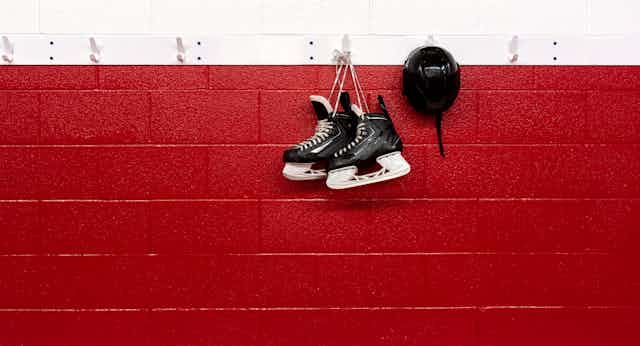Over recent weeks and months, Canadians have watched a stream of headlines tracing Hockey Canada’s failure to address sexual assault allegations. The misuse of hockey registration fees to pay for sexual assault settlements has raised growing concerns about sport culture and sexual misconduct among some players.
Hockey Canada acknowledged that it did not “end the culture of toxic behavior” but grossly misunderstood and miscalculated the depth and breadth of the problem. This is, in large part, because of a failure to recognize the intersection of sport culture and masculinity in male dominated spaces.
A group of international academics and researchers sent an open letter to Canada’s Sport Minister and the Standing Committee on Canadian Heritage raising longstanding concerns about sexual violence, misogyny, masculinity, homophobia and bullying in sport, and hockey culture in particular.
Sport culture and masculinity
Following a federal government inquiry into Hockey Canada, sponsors withdrawing financial support and public pressure demanding change, the board of directors resigned. But much work still needs to be done to remedy toxic masculinity and a familiar parade of male privilege and entitlement in a sport that has not been held to account for its actions.

Mainstream media has allowed the conversation of sexual assaults and sport culture to land squarely onto hockey itself. The result: the relationship between masculinity and sport remains intact and unchanged. Meanwhile repeated assault cases and considerable research show that the issues we are seeing within Hockey Canada are disproportionately linked to gender —namely masculinity — and sport culture.
Locker room rules
The organization, and perhaps the general public, has been focused on the inner workings, the hierarchy of power and who said what, knew what, and when. But men, hockey players in this case, and the board of directors have failed to account for the sexual violence.
Allegations of sexual assault against eight hockey players have been overshadowed by an administrative abuse of power and misuse of registration fees that has pushed sexual violence to the sidelines of the conversation. What about the players? How can the locker room rules for being one of the boys yet again perpetuate such damaging and far-reaching actions and reactions?
Boys routinely navigate locker rooms and highly masculinized spaces with fear and vulnerability. Men are afraid to speak up against or in violation of a boy code that requires conformity and uniformity. There is a culture of silence among men desperately wanting to fit and be accepted.
Men refuse to be vulnerable, to step out from the shadows of dominant figures in locker rooms because they fear the consequences. Even when we see unethical conduct among the boys, it is a hyper-masculine sport culture that sustains and maintains rules that rely on and ensure silence and fear among boys and men.

The courage to change
Regardless of which sport they play, men and boys need to have the courage to speak up against sexual violence, homophobia and racism. Bullying, domination and marginalizing boys because they refuse to participate in this culture cannot be tolerated.
What are we doing to promote a rethink, a shift in masculinity in sport culture? What have sport organizations done specifically to change the narrative on masculinity and on gender diversity more broadly? When will the daily realities of diverse masculinities and fluid gender identities and calls for safer, healthier work, play, sport cultures, finally be realized? Hockey Canada needs to change its approach, its message, its direction and the very images of masculinity it valorizes and validates.
For athletes, attitudes, behaviours and expressions of masculinity need to change. Violence, aggression and domination do not have to be the norm by which we judge men and boys. The lessons learned to be a man, to exert domination and power over others, to prove manliness and control others are deep-seated cultural constructions. The suggestion that doing otherwise makes someone less of a man, inadequate and weak, relies on flawed and damaging views of masculinity.
Hockey Canada has a responsibility to purposefully change the instructions, guidelines and institutional culture that uphold and maintain damaging versions of masculinity. With purposeful change and intentional redirection, Hockey Canada can lead a culture shift within sport. “Boys being boys” and “it’s just the way it is” are not acceptable excuses for sexual assaults, misogyny, homophobia and bullying.
Instead, boys should be encouraged and supported with leadership that promotes inclusion and rejects sexism, violence and bullying.
Becoming a valued team member does not have to rely on acting like “one of the boys” while harbouring fears and insecurities that cloak weaknesses and uncertainties. Rather than promoting a culture of masculinity in sport that perpetuates fear and silence in boys trying to fit in, Hockey Canada, coaches and parents can support boys who show courage, commitment and allyship that makes for safer and healthier masculinities in sport.

